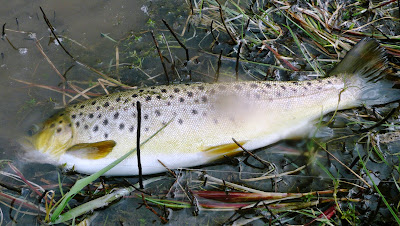I came across a lovely wet Daddy Snatcher tied by Dave McPhail which caught my eye. I had to tie a few up for the box and several variants. I can see this working very well on the top dropper - useful for my forthcoming trip. Here are a few patterns that may be of interest and which may provoke some further ideas.
Hook: Fulling Mill Supergrub size 10
Daddy Snatcher
Thread: Wine UTC 7/0
Body: Pheasant tail
Rib: Fine Gold oval
Wing: Cree cock hackle tips
Legs: Three or four knotted pheasant tail tied in at each side
First hackle: two or three turns of red cock hackle
Second hackle: Red hen hackle (optional)
Claret Daddy Sntacher
Hook: Fulling Mill Supergrub Size 10
Body: Black claret seals fur
Body hackle: Black or claret cock hackle
Rib: Fine oval gold wire
Wing: Grizzle or badger hackle tips
Legs: Three of Four Claret knotted pheasant tail legs on each side
Hackle: Claret Cock Hackle or Black
Fiery Brown Daddy Snatcher
Hook: Fulling Mill subergrub, size 10
Body: Fiery Brown fritz straggle hackle
Body hackle: Fiery Brown Cock hackle
Body hackle: Fiery Brown Cock hackle
Rib: Oval gold wire
Wing: Cree hackle points
Legs: Three of Four Orange knotted pheasant tail legs tied on each side
Legs: Three of Four Orange knotted pheasant tail legs tied on each side
Head hackle: Fiery brown cock hackle
Gold Daddy Snatcher
Hook: Fulling Mill Supergrub size 10
Body: Gold micro-fritz
Body hackle: Ginger cock hackle
Rib: gold oval tinsel
Wing; GP Tippets
Legs: Claret or Natural knotted pheasant tail legs
Thorax: Gold micro-fritz
Hackle: A few turns of Ginger cock or hen hackle tied over the thorax
For the pattern on the left, I have tied several knotted legs at the rear and followed through the with usal set of legs after the wing.
Gold Daddy Snatcher
Hook: Fulling Mill Supergrub size 10
Body: Gold micro-fritz
Body hackle: Ginger cock hackle
Rib: gold oval tinsel
Wing; GP Tippets
Legs: Claret or Natural knotted pheasant tail legs
Thorax: Gold micro-fritz
Hackle: A few turns of Ginger cock or hen hackle tied over the thorax




















































